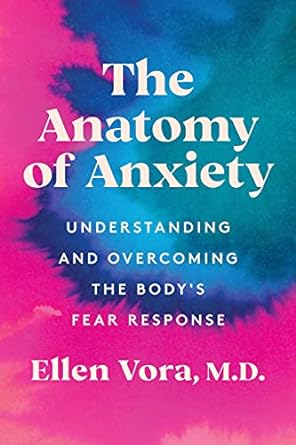
The book “The Anatomy of Anxiety” by Ellen Vora offers a deep look into understanding anxiety and its symptoms. The clarity that ensues from a well-structured awareness helps cope with anxiety, as one of the world’s most common mental disorders.
How Much Should We Be Concerned About a Diagnosis?
The book suggests that symptoms of anxiety can be a result of various physiological inputs, not a simple brain dysfunction. The author explains that giving anxiety a diagnosis label can negatively define people and shape their narratives. There should be less emphasis placed on a diagnosis and more focus on exploring the particulars of the individual lifestyle and habits.
“True” vs. “False” Anxiety
There is a distinction made in the domain of anxiety:
Whether we are feeling “true” or “false” anxiety.
True anxiety is all about our true emotions. For example, we feel stressed if we lose our job. “True” anxiety can be very challenging but is a vital part of life. “False” anxiety is when we feel uneasy, stressed out and uncomfortable and try to relate those sensations to environmental factors. For example, when you feel that your low mood is related to your boss’s email that suggested you’re underperforming at work. False anxiety doesn’t suggest that your feelings are unreal and invalid. Rather, it offers a more fundamental message about your body and physiological response. The author suggests that false anxiety could be related to things like being overcaffeinated, undercaffeinated, hungry, dehydrated among many other physiological factors. They can be avoidable and once we recognize and identify the type of our anxiety, we are better equipped to consciously deal with it at the level of our body.
True Anxiety
When anxiety is the “true” type, no amount of gut healing, good sleep, decaf coffee and anxiety relief medicine can resolve it. A great example explained in the book is when our lives don’t align with our values, we feel a sense of anxiety. Feelings like this should be embraced as they are life’s way of telling us that we need a course correction. There is something heavier and more solid underneath our anxious feeling. If we listen carefully, these feelings can be a like compass guiding us to navigate through life’s challenges.
The Power of a “True Yes” or a “True No”
For many of us, it is hard to recognize when we do not want to comply with a request. We want to be liked or avoid confrontation. But often, anxiety is what we get for a “false yes” and being compliant against our will. Every “false yes” is a step towards training our bodies to be confused or quieted.
Workism
There is a cultural shift towards workism that has made us very productive, but also very anxious. We have a constant feeling that we could always do more. The trend towards a more productive lifestyle has made us see leisure as a function of increasing our output. The author suggests valuing leisure for the sake of leisure, so that our relaxation time doesn’t become exhausting. This process requires us to schedule breaks and relaxation time into our calendars.
Trying to Achieve Someone Else’s Goals
Defaulting to what the world is asking of you, pursuing someone else’s goals just because it sounds cool, focusing solely on making the most money at the expense of health and wellbeing are all things that do not serve our true selves. Instead, we should make choices for ourselves with a conscious and balanced mindset.
Perfectionism
Perfectionism is a defense mechanism to secure our seat at the table, but it only leads to anxiety and paralysis. So, perfectionism can become the opposite of doing our best, since we get trapped in a state of inaction.
The Power of Letting Go
It is important to surrender to things that we can’t control. The more we can get comfortable with surrendering and trusting in something larger, the less anxious we will be.
“False” Anxiety
The book lists a variety of factors as sources of false anxiety:
- Sleep habits
- Nutrition
- Ever-changing healthy eating recommendations
- Technology
- Caffeine
- Alcohol
- Hormonal health
- Chronic inflammation compromising our immune system
- Insufficient sun exposure
- Stress and relaxation response
The author goes through each factor in details and provides practical tips to deal with each one. For example, shamanic shaking is suggested as an effective practice to complete the stress cycle. Shamanic shaking is a simple movement that involves closing your eyes, letting a soft bend in your knees, and feeling your body as a loose rag doll. You then shake and move to music in whatever direction that feels good to you for a few minutes. Meditation and gratitude are other helpful tools suggested in the book to guide our path out of anxiety. These tools help listen to our bodies in a more intentional way.
This is an incredible read with many practical tips and examples to help cope with anxiety. The author lists suggestions on how to deal with Sunday Scaries. She also explains how making new connections and quality relationships can be effective in achieving true happiness.
We must find our unique sense of stability. Perfect health is not enough by itself. We must also have a fulfilling life to feel our best. And this book has great tips on how to achieve that.
